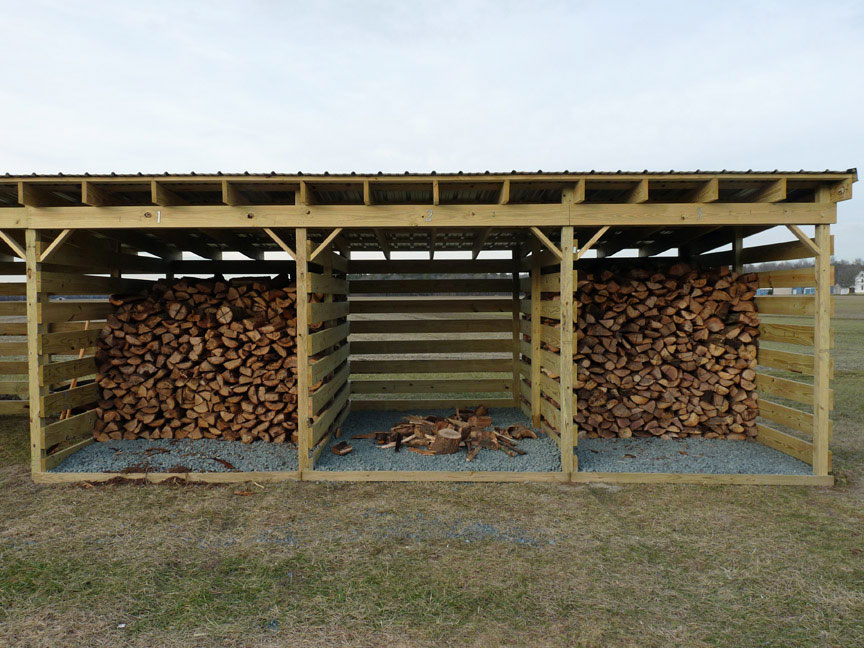USMC0802
ArboristSite Guru
I'm about to finish up a wood shed and want to confirm a few things. The shed is really just a support to hold up a steel roof so I don't have to deal with tarps ripping every year, digging off the snow and ice, etc. It's 5' x 20', long side facing south/southeast. Rain and snow typically come from the west. I have 4x4s every 5' lengthwise, and three posts at each "row." The idea was to have four bays to stack the wood. I go through a bit over three cords per year and want to have an extra cord plus that will season longer than the rest to start the burning season with or should someone ever turn off the global warming switch, I'll have extra for a longer/colder winter.
I'm going to be putting green wood the "shed" next year and want to make sure I get enough air flow through it to season the wood. I have my 4x4s in the ground, gravel spread for the "floor" and about to put up the slats. I keep seeing different posts about no slats, just a couple, 6" between them, etc.
Are 2x6's overkill for the slats? If so, 2x4s? They're going to be holding the outward pressure of the stacks and tie the 4x4 posts together. What spacing to allow good air flow? I'm going to roll a tarp down on the western side and probably the open front during the winter or if there are days of rain in the forecast. Roof is 8' sheets with about 1' overhang in the rear and 2' in the front, minus the loss to the slope.
Used these two as an idea to start from, but they all look significantly deeper than 5':


Could run three 2x6s across the top, middle, and bottom and then a 2x4 vertically to contain the rows like this:

I'm going to be putting green wood the "shed" next year and want to make sure I get enough air flow through it to season the wood. I have my 4x4s in the ground, gravel spread for the "floor" and about to put up the slats. I keep seeing different posts about no slats, just a couple, 6" between them, etc.
Are 2x6's overkill for the slats? If so, 2x4s? They're going to be holding the outward pressure of the stacks and tie the 4x4 posts together. What spacing to allow good air flow? I'm going to roll a tarp down on the western side and probably the open front during the winter or if there are days of rain in the forecast. Roof is 8' sheets with about 1' overhang in the rear and 2' in the front, minus the loss to the slope.
Used these two as an idea to start from, but they all look significantly deeper than 5':


Could run three 2x6s across the top, middle, and bottom and then a 2x4 vertically to contain the rows like this:

























































